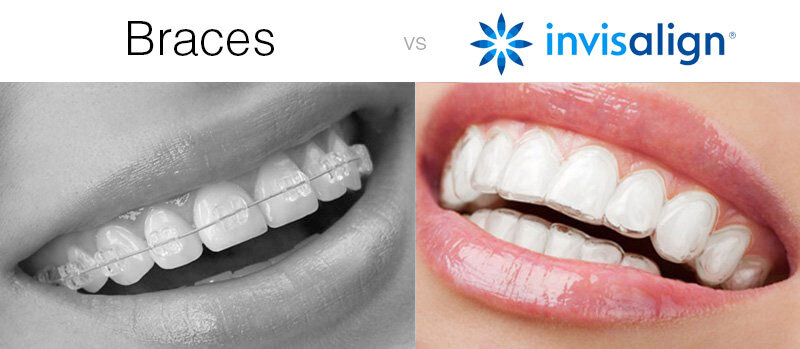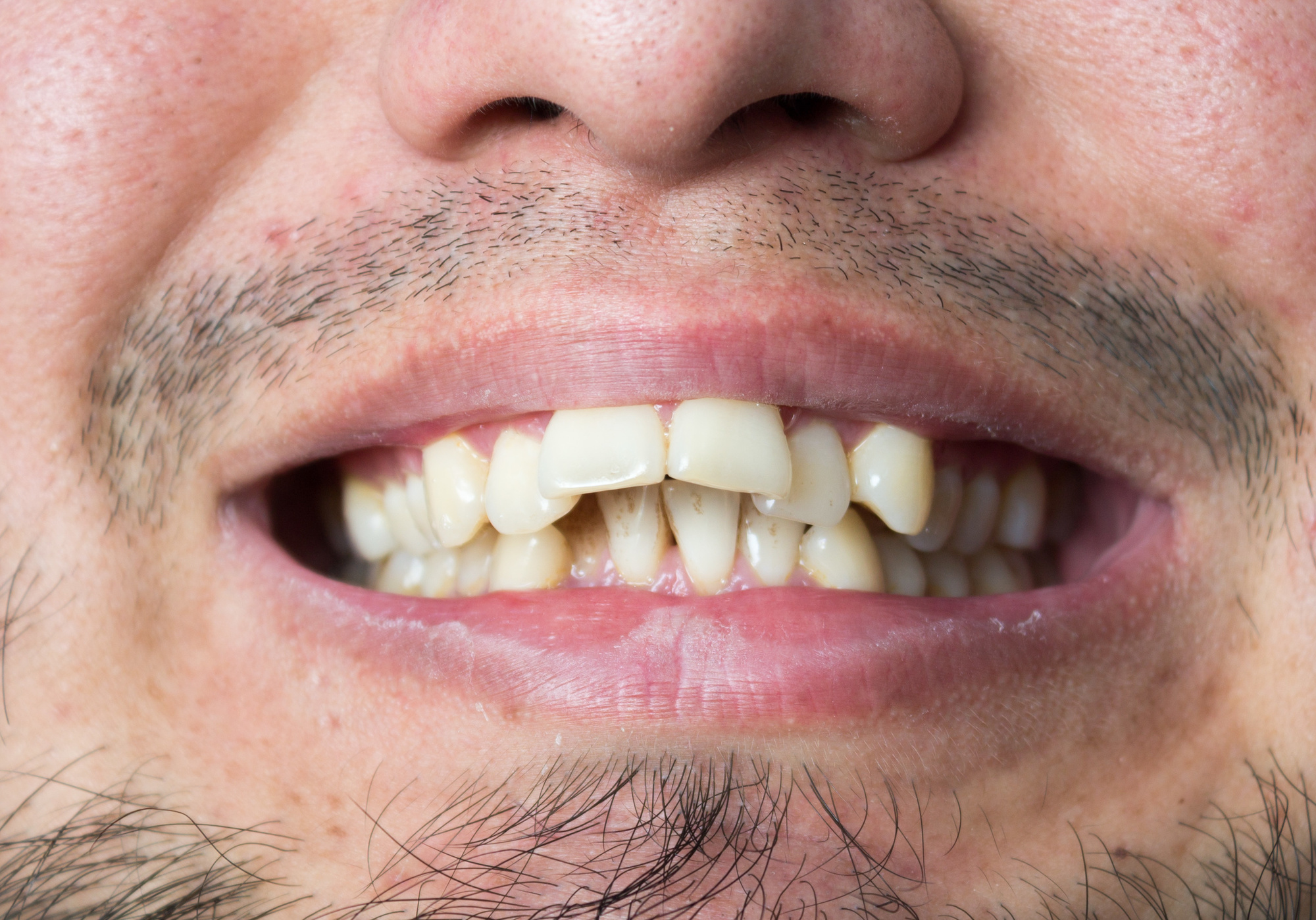Discover the Benefits of Invisalign for a Perfect Smile Makeover
Discover the Benefits of Invisalign for a Perfect Smile Makeover
Blog Article
Invisalign vs. Traditional Braces: Which Choice Is Right for You?
When taking into consideration orthodontic treatment, the choice between Invisalign and standard dental braces offers numerous important elements that merit cautious examination. Invisalign uses a very discreet choice with detachable aligners, while traditional braces provide a more visible yet efficient option for serious misalignment. Each choice includes unique benefits and disadvantages associated to appearances, convenience, therapy period, and price. Comprehending these nuances is important for making a notified decision that lines up with your personal preferences and way of life. The inquiry continues to be: which alternative will finest satisfy your orthodontic requirements and expectations?
Review of Treatment Options

On the other hand, conventional dental braces contain metal brackets and cords that are bonded to the teeth. This technique uses continual pressure gradually to attain alignment. While efficient for intricate orthodontic concerns, traditional braces need regular sees for adjustments and can present challenges in maintaining dental hygiene because of the difficulty of cleansing around braces and cables.
Both options have their merits, and the choice typically depends upon particular oral problems, way of living choices, and person compliance. Ultimately, speaking with an orthodontic expert is vital for determining one of the most suitable therapy strategy customized to specific demands. Recognizing the subtleties of each alternative can dramatically affect the total success of orthodontic treatment.
Visual Factors To Consider
A considerable element affecting the option between Invisalign and typical dental braces is the aesthetic allure each treatment offers. Invisalign aligners are crafted from clear plastic, making them essentially unnoticeable when put on.
On the other hand, conventional dental braces consist of steel brackets and cords, which can be much more noticeable. While improvements in orthodontic technology have actually resulted in the growth of smaller braces and colored elastics, standard braces still preserve an even more conspicuous profile. For some people, the exposure of braces might prevent them from seeking needed treatment.
Inevitably, the choice in between Invisalign and traditional dental braces might hinge on individual choices concerning visual appeals. Individuals that prioritize discretion usually lean toward Invisalign, while those that are much less worried about exposure might select conventional dental braces. Recognizing the aesthetic ramifications of each choice is crucial for making an informed decision that lines up with one's way of living and preferences.
Comfort and Convenience

In terms of benefit, Invisalign aligners are removable, making it possible for people to enjoy their favorite foods without constraint and keep ideal oral hygiene. Cleaning and flossing are streamlined, as the aligners can be gotten during these regimens, whereas conventional braces call for cautious maneuvering around braces and cables.
Additionally, Invisalign's dynamic system enables fewer orthodontic brows through. Individuals typically obtain several collections of aligners at the same time, which can streamline the therapy process and lower time spent in the orthodontist's chair. On the other hand, traditional braces demand routine adjustments, making them less convenient for those with busy timetables. Invisalign. In general, the convenience and comfort of Invisalign make it an attractive choice for lots of people looking for orthodontic therapy.
Therapy Duration and Performance
While both Invisalign and conventional dental braces work in fixing oral imbalances, the duration of treatment can vary dramatically in between both choices. Typically, Invisalign therapy Resources can take anywhere from 12 to 18 months, depending on the complexity of the situation. The clear aligners function by progressively changing teeth into their desired settings, and routine follow-ups with an orthodontist assistance make certain progression remains on track.
In contrast, conventional braces commonly call for a longer dedication, generally varying from 18 months to 3 years. This results from their set nature and the usage of braces and cords, which can be extra reliable for intricate instances and extreme imbalances (Invisalign). The treatment efficiency of conventional braces is well-documented, as they permit precise adjustments and greater control over tooth activity
Inevitably, the selection between Invisalign and conventional braces may depend upon both the awaited treatment duration and the specific oral concerns available. Consulting with an orthodontist is important, as they can offer tailored referrals based upon private needs, ensuring the picked technique aligns with wanted end results Going Here and timeframes.
Expense Comparison and Insurance Policy Choices
Cost plays a significant duty in the decision-making procedure for individuals considering orthodontic treatment, whether choosing Invisalign or conventional dental braces. On standard, the cost of Invisalign arrays from $3,000 to $8,000, while standard braces normally cost in between $2,000 and $6,000. Elements affecting these expenses consist of the complexity of the situation, the duration of treatment, and geographical location.
Insurance policy protection can dramatically impact out-of-pocket expenditures. Lots of dental insurance plans give partial insurance coverage for orthodontic therapies, however the specifics can differ commonly. It is essential for individuals to review their insurance policy policies to figure out the extent have a peek at this site of protection for either alternative. Typically, typical braces may be extra frequently covered by insurance coverage strategies contrasted to Invisalign, which some insurance companies classify as a cosmetic procedure.
Furthermore, a number of orthodontic techniques supply flexible payment plans, making both treatment choices a lot more easily accessible. People need to ask about potential financing options and discounts for upfront payments. Evaluating the complete price, consisting of insurance policy advantages and repayment strategies, is necessary for making an educated choice that lines up with both aesthetic preferences and budget considerations.

Verdict
In recap, the option between Invisalign and standard braces hinges on multiple factors, including visual choices, comfort, treatment duration, and price. Invisalign supplies a very discreet, removable option that facilitates dental health and dietary flexibility, while traditional dental braces might be preferable for complex oral problems and typically come at a reduced cost point. Ultimately, appointment with an orthodontist is necessary to examine individual circumstances and establish the most appropriate therapy choice for achieving optimum oral alignment.
When taking into consideration orthodontic treatment, the choice in between Invisalign and conventional dental braces provides several crucial elements that warrant cautious evaluation.Contrasting Invisalign and traditional dental braces reveals unique treatment choices for orthodontic correction.While both Invisalign and standard braces are efficient in correcting oral imbalances, the duration of therapy can vary substantially between the two alternatives.Cost plays a substantial role in the decision-making process for people considering orthodontic therapy, whether deciding for Invisalign or traditional dental braces.In summary, the option in between Invisalign and conventional dental braces pivots on multiple aspects, consisting of aesthetic preferences, convenience, therapy duration, and cost.
Report this page